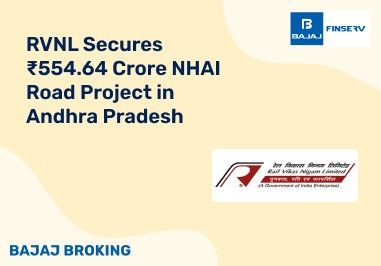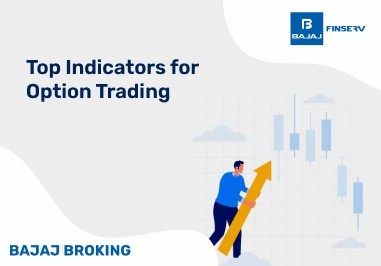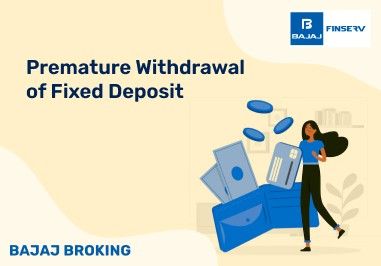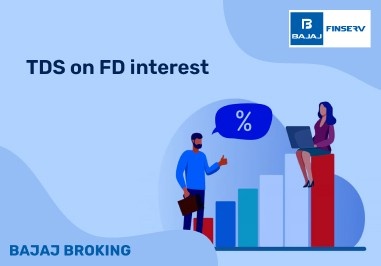BAJAJ BROKING
PDP Shipping & Projects IPO is Open!
Open a Free Demat Account
Trade Now, Pay Later with up to 4x
Track Market Movers Instantly
Simplifying Budget Terms | #BudgetSimpleHai (2025)
Welcome back to "Budget Simple Hai," brought to you by Bajaj Broking! Ever felt overwhelmed by all the jargon thrown around during the Union Budget? Terms like fiscal deficit, capex, GDP – they all sound important, but what do they mean?
#BudgetSimpleHai
Listen to our special podcast series on this Union Budget 2024. We bring insights, stories, explainers, stock recommendations, and much more on our podcast Markets Daily.
Why Budget Knowledge Matters
Imagine you're planning a family trip. You need to figure out your budget – how much money you have coming in (income) and how much you'll be spending (expenses). The Union Budget works similarly but for the entire country! Understanding these key terms is like having a roadmap to the Government's financial plans. It helps us see where our tax money goes, how the Government prioritizes spending, and ultimately, how these decisions impact our daily lives.
Fiscal Deficit: The Gap Between Income and Spending
This term simply refers to the difference between the Government's total income (taxes, fees, etc.) and its total spending (on public services, infrastructure, etc.). Just like in your family budget, if you spend more than you earn, you have a deficit. A high fiscal deficit can impact things like interest rates and inflation, so it's important to keep an eye on it.
Example: Let's say the Government earns ₹10 lakh crore in taxes this year but spends ₹12 lakh crore on various projects. That ₹2 lakh crore gap is the fiscal deficit. Now, the Government can bridge this gap by borrowing money, just like you might use a credit card to cover a temporary expense.
CAPEX: Investing for the Future
It is short for capital expenditure. This refers to the money the Government spends on building and improving long-term assets like roads, bridges, airports, and public transportation systems. Think of it as an investment in the country's future infrastructure. Good capex spending can boost economic growth and create jobs.
Example: Imagine your family decides to save up for a new car. That money you're setting aside is like capex. It's a one-time expense, but it will benefit you for years to come by making transportation easier and more convenient.
GDP: Gross Domestic Product
This term measures the total value of all goods and services produced in a country within a year. It's like a scorecard for the economy, showing how much wealth a country is generating.
Example: Think of it as your family's total income from all sources in a year – salaries, investments, etc. A higher GDP generally indicates a stronger and more vibrant economy.
Debt-to-GDP Ratio: Measuring Financial Health
We've also heard about the debt-to-GDP ratio. This compares a country's total debt (money borrowed) to its GDP. It's like a measure of the country's financial health – a lower ratio indicates the country can manage its debts better.
Example: Imagine your family has a credit card debt of ₹1 lakh, and your annual income is ₹5 lakh. Your debt-to-GDP ratio would be 20%. A higher ratio, like 50% or more, could be a cause for concern, like how maxing out your credit card wouldn't be ideal.
Subsidies: A Helping Hand
Lastly, let's explore subsidies. These are financial grants provided by the government to make essential goods and services, like cooking gas or electricity, more affordable for the public. They act like a helping hand, especially for low-income families.
Example: A subsidy is like a discount given by the government to make certain products or services more affordable for everyone. Imagine you go to school, and every day you buy lunch. Normally, a meal might cost 100 rupees. But, because the government wants to make sure all students can afford a healthy meal, they provide a subsidy. This means they pay part of the meal's cost. So instead of you paying 100 rupees, you only pay 40 rupees, and the government pays the remaining 60 rupees. This way, more students can afford lunch, ensuring everyone gets the nutrition they need to stay healthy and focus on their studies. The subsidy helps reduce the burden on families while promoting better health and education for children.
Making Smarter Decisions with Financial Knowledge
By understanding these key terms, we can gain valuable insights into the Government's financial plans and priorities. This knowledge empowers us to make informed decisions about our finances and investments. Remember, at Bajaj Broking, we're committed to making financial literacy accessible to everyone. So, stay tuned for more episodes of "Budget Simple Hai" where we break down complex financial concepts into simple terms.
Disclaimer: Investments in the securities market are subject to market risk, read all related documents carefully before investing. This content is for educational purposes only. Securities quoted are exemplary and not recommendatory.
For All Disclaimers Click Here: https://bit.ly/3Tcsfuc
Share this article:
Read More Blogs
Our Secure Trading Platforms
Level up your stock market experience: Download the Bajaj Broking App for effortless investing and trading













